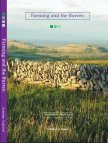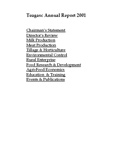National Conference on Agricultural Education
- Date
- 18 February 2003
- Type
- Event Proceeding
To provide an independent and authoritative research knowledge base, technology transfer and training services for the sustainable development of agriculture and the food processing industry to enable it to respond profitably to consumer demands and requirements and contribute to a vibrant rural economy and society.
- Date
- 1 January 2003
- Type
- Factsheet
Cryptosporidium parvum is a parasite which has already causes significant public health problems in the water industry and is now emerging as a potential food contaminant. This parasite can be present in the intestinal tract of animals including cattle and sheep and can be excreted in stable form as an oocyst from infected hosts. The oocyst can then contaminate the environment and enter the water and/or food chain. The clinical symptoms of C. parvum infection include acute watery diarrhoea with abdominal pain, accompanied by vomiting and weight loss. The disease is usually self-limiting with a duration of 2-3 weeks, although it can last up to 6 weeks. However in immunocompromised people the illness can become chronic and persistent. There is no specific antibiotics or clinical treatment available for treatment of this infection. While predominantly considered a water borne contaminant, Cryptosporidium parvum has also been linked to a small number of food borne outbreaks involving raw goats milk, tripe, salad, raw milk, offal and sausage and apple cider. To date, the source of many C. parvum infections have never identified due to a lack of routine methods for the detection of this pathogen and there is sparse data available on the risk the parasite poses in foods.
- Date
- 1 January 2003
- Type
- Event Proceeding
National Tillage Conference 2003
- Date
- 1 January 2003
- Type
- Event Proceeding
In Ireland approximately 60% (29,999 ha total land under organic) or 17,985 ha are in conversion with 12,014 ha fully organic. Of the 1083 registered producers 65% are in meat production with 40% in beef and 25% in sheep meat production. Vegetable production accounts for a further 13%, with cereals, milk, poultry and fruit making up the remainder.
- Date
- 1 January 2003
- Type
- Working Paper
Luxembourg CAP Reform Agreement - Analysis of the Impact on EU and Irish Agriculture
- Date
- 1 January 2003
- Type
- Event Proceeding

In terms of its natural and cultural heritage, the Burren landscape is a veritable oasis. The Burren uplands play host to over 70% of Ireland’s native flora, hundreds of burial sites, stone forts and ancient ecclesiastical sites. It is a key flagship for the Irish environment, remarkably rich, diverse and intact. However, the Burren is a landscape that depends very much on farming activity for the retention of its rich heritage. For over six thousand years, farmers have shaped the Burren. In much the same way, the unique challenges presented by karst landscape of the Burren have shaped use of the land and evoked distinctive agricultural responses.
- Date
- 1 December 2002
- Type
- Report
Situation and Outlook in Agriculture 2002/03
- Date
- 1 December 2002
- Type
- Report

The year 2001 will be remembered for the major outbreak of foot and mouth disease in Britain, the emergence of BSE in mainland Europe and September 11th in the US.
- Date
- 1 October 2002
- Type
- Report
L. Connolly, E. Finnerty, A. Kinsella, G. Quinlan
- Date
- 1 October 2002
- Type
- Report
